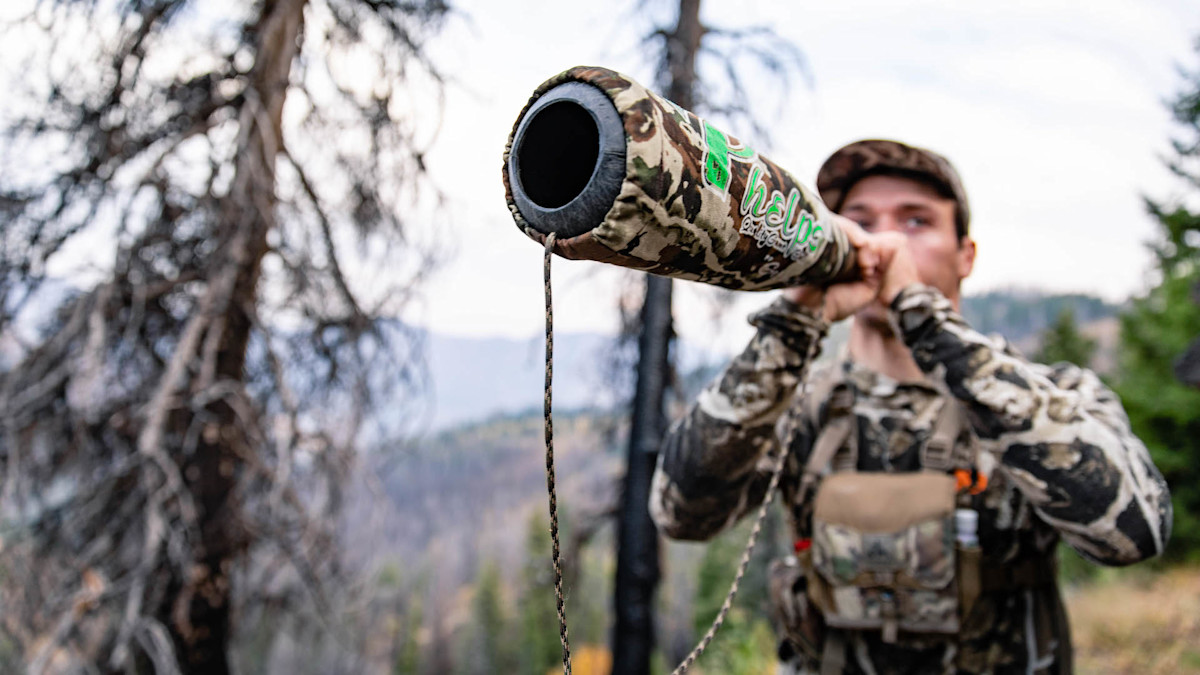
There isn’t a more coveted game animal for the common hunter than a bull elk. Sure, the one-percenters might get glossy-eyed over some type of sheep that lives in the mountains of some country most folks have never heard of, but for the average hunter, it’s the Rocky Mountain elk.
This is a hunt that is doable, for now. Over-the-counter and low-point licenses are still out there, and the American West is still covered in public land. It’s a hunt you should do if you can. You should also understand that there’s some conventional advice out there that won’t do you much good.
The truth is, a lot of elk first-timers get some of the big stuff wrong. To avoid this, you need to understand what you’re getting into.
Pre-Hunt Realities
Western hunters would have you believe that no sea-level dwelling whitetail dork stands a chance at elevation. This isn’t true. Elk hunting is physical, but it’s not as bad as it’s often portrayed (until you have to pack one out, of course).
The thing about getting into elk shape is that you don’t. You are either in shape, or you’re not. The people who live for mountain hunts don’t start six weeks before their first hunt by hiking around with some weights in a backpack.
They do some level of anaerobic (weightlifting) and aerobic (cardio) workouts, all year. You should too, if you want to enjoy your hunt. You don’t have to be able to complete a 100-mile ultramarathon in 24 hours to kill a rag horn in Colorado, but you don’t want to be the kind of person who gets winded ascending a flight of stairs, either.
Figure out how to work out year-round, even if your average running or lifting session is only half an hour. A base level of physical fitness is a huge benefit on a DIY elk hunt, and you will not get there by suddenly deciding in August that you’re going to go from couch potato to Crossfit junkie for a few weeks.
High Country Munchies
If you listen to a lot of high-country hunters spew advice on nutrition in the mountains, you’ll get bored. The truth is, you should focus on a weight-to-calorie ratio that allows you to carry enough food in so that you’re replacing maybe 3000-ish calories per day. Very few new elk hunters are in danger of starving to death if they run a 500- to 1000-calorie deficit each day for a week.
Packing food that you will actually want to eat, and that won’t tear your insides up, is key as well. Trust me on this, but you don’t want to get to 9,000 feet only to figure out that the dehydrated beef stroganoff you packed for dinner each night will affect you the way a three-day-old, room-temperature shellfish buffet would.
Test food out before your trip. Pack some candy or snacks you’ll actually want to eat. For my pre-trip process, I pack meal and snack bags for each day, with attention to calorie count and weight. Then I usually eat maybe half, even on a strenuous hunt. You can overthink (and overpack food), easily. Don’t stress about food, you’ll be fine.
Stupid Standards
I don’t know how many hunters I’ve talked to who have casually said something to me like, “I’m finally going on my first elk hunt. I’d be really happy with a 300-ish type bull, since I don’t need anything huge.”
I always wonder how easy it is for those same folks to kill a 150-inch whitetail on public land. I’d bet, not very easy. Low standards are your best friend on your first elk hunt. Legal elk should make the hitlist, and that’s it.
Unless you’re in a primo unit, or on an outfitted hunt where you get to take horses 11 miles deep into a honey hole, you’ll be lucky to get a few close encounters in a week. If you might only have one or two elk within range on any given hunt, you don’t want to set your standards so high that you never hook your release to your d-loop.
Elk hunting is fun, but it’s hard. Public land bulls are not easy to call, and they rarely hang out in the dreamy meadows you’ll probably focus on when you e-scout before your trip. The truth is, if you are willing to work for it, you’ll get a chance or two. Probably in the dark timber, probably when you least expect it, and probably not with a 300-ish class bull.
For more elk hunting information, check out these articles: Steven Rinella’s Top Elk Hunting Techniques, How To Clean Elk Ivories, and Ask Meateater: Where Should I Go On My First Elk Hunt?
Feature image via Captured Creative.





Conversation